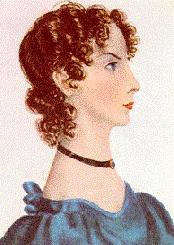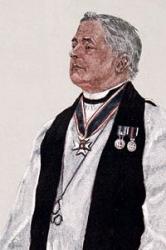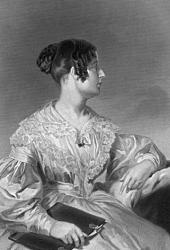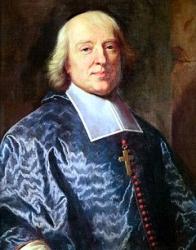Planning worship?
Check out our sister site, ZeteoSearch.org,
for 20+ additional resources related to your search.
- |
User Links
Person Results
‹ Return to hymnal




Export as CSV
Allen Eastman Cross
1864 - 1942 Hymnal Number: 409 Author of "America, America" in Hymns for the Living Age Born: December 30, 1864, Manchester, New Hampshire.
Died: April 23, 1942, Manchester, New Hampshire.
Cross attended Phillips Andover Academy, Amherst College and the Andover Theological Seminary. He pastored in Cliftondale, Massachusetts (1892-96); Springfield, Massachusetts (1896-1901); at the Old South Church, Boston, Massachusetts (1901-12); and Milford, Massachusetts (1916-25). His works include:
Pass on the Torch, 1929
Thunder Over Jerusalem/, 1936
--www.hymntime.com/tch/
Allen Eastman Cross
Anne Bronte

1819 - 1849 Hymnal Number: 310 Author of "Believe not those who say" in Hymns for the Living Age Brönté, Anne, sister of Charlotte, and daughter of the Rev. Patrick Bronte, B.A., Vicar of Haworth, Yorkshire, born at Thornton, near Bradford, 1819; died May 28, 1849. Anne Brönté was joint author with her sisters of a small volume of Poems, 1846, and personally of Agnes Grey, 1847; and The Tenant of Wildfell Hall, 1847, her nom de plume being Acton Bell. In 1851 a new edition of Wuthering Heights, by Ellis [Emily] Bell; and Agnes Grey, by Acton [Anne] Bell, was edited, with biographical notes, and selections from their papers by their sister, Charlotte Brönté. These selections consisted of poems and hymns by the two sisters. From those of Anne the following have come into common use:—
1. I hoped that with the brave and strong. Time of Sorrow. A hymn of much plaintive beauty, wrung from the writer by disappointment and affliction. It is in several collections, as Horder's Congregational Hymns, 1884, &c.
2. My God, 0 let me call Thee mine. Lent, Also very plaintive, but not so extensively in use. It is No. 291 in the Baptist Hymnal, 1879.
3. Oppressed with sin and woe. Confidence. The most popular, although not the best of her hymns. It is in many collections, both in Great Britain and America.
4. Spirit of truth, be Thou my Guide. Spirit of Truth. In a few hymnals, including Dr. Martineau's Hymns of Praise & Prayer , 1873.
-- John Julian, Dictionary of Hymnology (1907)
Anne Bronte
Horatio W. Parker
1863 - 1919 Hymnal Number: 37 Composer of "GARDEN CITY" in Hymns for the Living Age
Horatio W. Parker
Frederick A. J. Hervey

1846 - 1910 Person Name: Frederic A. J. Hervey Hymnal Number: 206 Composer of "HERVEY'S LITANY" in Hymns for the Living Age Born: May 18, 1846, Westminster, Middlesex, England.
Died: August 8, 1910, Norwich, England.
Buried: St. Mary Magdalene’s Church, Sandringham, Norfolk, England.
Son of Alfred, Lord Hervey, Frederick was educated at Marlborough and Trinity College, Cambridge (BA 1868, MA 1872). He was ordained a deacon in 1869, and priest in 1870. He served as Rector of Upton-Pyne, Devon (1876); Sandringham (1878-1907); Canon of Norwich (1897); and Domestic Chaplain to King Edward VII (1901).
--www.hymntime.com/tch/
Frederick A. J. Hervey
Arthur Cottman
1842 - 1879 Hymnal Number: 325 Composer of "MIRFIELD" in Hymns for the Living Age Born: Circa November 1841, Ringwood, Hampshire, England.
Died: Circa May 1879, Brentford, Middlesex, England.
Cottman was a solicitor and amateur musician. His works include:
Ten Original Tunes, 1874
Music:
CATERHAM
COTTMAN
DALEHURST
EVERSLEY
MIRFIELD
MORN OF GLADNESS
--www.hymntime.com/tch
Arthur Cottman
Mrs. Hemans

1793 - 1835 Person Name: Felicia D. Hemans, 1793-1835 Hymnal Number: 532 Author of "The peace which God bestows" in Hymns for the Living Age Hemans, Felicia Dorothea, née Browne, was born in Liverpool, Sep. 25, 1793. In 1800, her father having suffered severe losses in business, removed with his family near to Abergele, N. Wales, where he died sometime after. In 1812 she was married to Captain Hemans, who, on retiring from the army sometime after, removed to Bronnylfa, near St. Asaph. Some years after he left his wife and children and proceeded to Italy, where he died. In 1828 Mrs. Hemans removed to Wavertree, near Liverpool, and in 1831 to Dublin, where she died May 16, 1835, and was buried in St. Ann's Church, Dawson Street, in that city. From 1808, when at 15 she published Poems, to 1834, when her Scenes & Hymns of Life appeared, she produced a great number of poems and other works, including:
(1) The Domestic Affections and Other Poems, 1812; (2) The Sceptic, 1820; (3) Dartmoor, 1821; (4) Vespers of Palermo, 1823; (5) The Siege of Valenciav, 1823; (6) Voice of Spring, 1823; (7) Forest Sanctuary, 1825; (8) Hymns for Childhood, 1827 (English edition, 1834; first published in America); (9) Records of Woman and Miscellaneous Poems, 1828; (10) Songs of the Affections, 1830; (11) Scenes and Hymns of Life (dedicated to the poet Wordsworth), 1834. Then followed (12) The Works of Mrs. Hemans; with a Memoir of her Life by her Sister [Mrs. Hughes]. Edinburgh, W. Blackwood & Sons, 1839, in 3 volumes. Her Poems were collected and published by Blackwood in 1849, and again as one of the Chandos Classics, 1886.
Three distinct ideas pervade Mrs. Hemans's poetry, the Fatherhood of God, Heaven as our Home, and mutual recognition when there. The work of the Atonement has a very subordinate place; and the Holy Spirit is scarcely recognized. The rhythm, even in her most popular pieces, is often disappointing, and a tone of sadness pervades most of her work. The gloom of disappointment and the traces of shadowed memories run like black threads through the web and woof of her productions. As a writer of hymns she holds a subordinate place. The best are "Answer me, burning stars of light," "Calm on the bosom of thy God," “Come to the land of peace," and "Fear was within the tossing bark." [Rev. James Davidson, B.A.]
Mrs. Hemans's hymns which have come into common use include;—
1. Answer me, burning stars of light. Trust in God. Written after the death of a sister-in-law, and published in her Records of Woman, &c, 1828, p. 242, in 4 stanzas of 8 lines. (P. Works, N.Y., 1828, vol. ii. pp. 144, 268).
2. Calm on the bosom of thy God. Death and Burial. This hymn appears in the closing scene of her dramatic poem, The Siege of Valencia, 1823, p. 235, in 2 stanzas of 4 lines. (Works, vol. iii. p. 379). It is supposed to be sung over the bier of Ximena, daughter of Gonzalez, the Governor of Valencia, during the final struggle of the siege. Mrs. Hemans subsequently added a third stanza ("Lone are the paths, and sad the bowers"); and in this form it is published separately as "A Dirge" in her Works, vol. iv. p. 330. It is one of the best known of her hymns.
3. Child, amidst the flowers at play. Hour of Prayer. This is given in her P. Works, 1828, vol. ii. p. 85, amongst the "Miscellaneous Pieces," in 3 stanzas of 8 lines, as a hymn for The Hour of Prayer. Dr. Martineau in his Hymns, &c, 1873, dates it 1825.
4. Come to me, dreams [thoughts] of heaven. Aspiration. Appeared in her National Lyrics, 1834, p. 251, and again in her Works, 1839, vol. vii. p. 88.
5. Come to the land of peace. The Angel's Greeting. Published in her Works, 1839, vol. vi. p. 186.
6. Earth! guard what here we lay in holy trust. Burial. Given in her Works, 1839, vol. iv. p. 327. This is a poem, and not a hymn.
7. Father! that in the olive shade. Gethsemane. Written at the death-bed of her mother, Jan., 1827, and published in her Hymns for Childhood, in 4 stanzas of 4 lines, as a Hymn by the sick-bed of a Mother. (Works, 1839, vol. vi. p. 147.) Sometimes as "O Thou, Who in the olive shade."
8. Father, Who art on high. Prayer. This is part of her "Cathedral Hymn," published in her Scenes and Hymns of Life, 1834. (Works, 1839, vi. p. 142.)
9. Fear was within the tossing bark. Stilling the Tempest. This hymn appeared in her Hymns for Childhood, 1827; her Poetical Works, N. Y., 1828, ii. p. 124; and her Works, 1839, vol. iv. p. 325.
10. He knelt, the Saviour knelt and prayed. Gethsemane. This hymn appeared in The Almut (an annual) 1n 1825, and her Poetical Works, N.Y., 1828, ii. p. 125. It is also introduced in her dramatic poem, The English Martyrs: a Scene of the days of Queen Mary, published in her Scenes and Hys. of Life, 1834, p. 16. A betrothed couple are condemned to death: but are allowed a short intercourse before execution. This they employ in prayer and the singing of this hymn, which is based upon the sacred scene in Gethsemane. "The English Martyrs" is the opening piece of the Scenes and Hymns of Life, 1834. (Works, vii. p. 130.)
11. I hear thee speak of the better land. Heaven. Published in her Poetical Works, N. York, 1828, ii. p. 193, and her Songs of the Affections, 1830, p. 225, in 4 stanzas of 7 lines, and headed “The Better Land." (Works, 1839, vi. p. 123.) Popular as a sacred song, but not much used as a hymn.
12. Leaves have their time to fall. The Hour of Death Published in her Poet. Works, N. Y., 1828, ii. p. 114, and in her Forest Sanctuary , 2nd edition, 1829, p. 276, in 10 stanzas of 4 lines. (Works, 1839, iv. p. 177.) It is usually given in an abbreviated form.
13. Lowly and solemn be Thy children's cry to Thee. Burial. This hymn, in 9 stanzas of 6 lines, forms the closing portion of her poem on The Funeral Day of Sir Walter Scott. [He d. Sept. 21, 1832.] The poem was given in her Scenes and Hymns of Life, 1834, p. 99. (Works, vii. p. 178.) In an abbreviated form this Burial hymn is in extensive use in Great Britain and America, and is found in more hymn-books than all the rest of Mrs. Hemans's hymns put together.
14. No cloud obscures the summer's sky. Ps. xix. Appeared in her Hymns for Childhood, in 10 stanzas of 4 lines, and entitled “The Stars." (Works, 1839, iv. p. 253.) It is usually given in an abbreviated form, beginning with stanza ii., "Child of the earth, Oh lift thy glance."
15. Now autumn strews on every plain. Harvest. One of her juvenile pieces, published in her Poems, Liverpool, 1808, p. 94, as a "Harvest Hymn."
16. O lovely voices of the sky. Christmas Carol. Appeared in her Hymns for Childhood, 1827, in 3 stanzas of 8 lines, and her Poet. Works, N. Y., 1828, ii. p. 123. (Works, v. p. 307.
17. Praise ye the Lord on every height. Ps. cxlviii. Published in her Hymns for Childhood, in 7 stanzas of 4 lines. (Works, 1839, iv. p. 264.)
18. Saviour, now receive him. Burial. Scenes and Hys. of Life, 1834, p. 70, is a hymn entitled, "The Funeral Hymn" in the Burial of an Emigrant's Child in the Forest. It begins "Where the long reeds quiver." This extract opens with stanza ii. altered.
19. The breaking waves dashed high. Landing of the Pilgrim Fathers. Published in her Records of Woman, &c, 1828, p. 261, in 10 stanzas of 4 lines, and in her Works, 1828, p, 261, "The Landing of the Pilgrim Fathers in New England." (Works, 1839, v. p. 280.) Popular as a sacred song, but not much used as a hymn.
20. The Church of our fathers so dear to our souls. The Holy Church. This hymn has not been traced to date. Snepp, in Songs of Grace & Glory, says 1834.
21. The kings of old have shrine and tomb. The Graves of Martyrs. In The Forest Sanctuary, 2nd edition, 1829, p. 284, "The Graves of Martyrs" in 7 stanzas. Also Poet. Works, N. Y., 1828, ii. p. 150.
22. Where is the tree the prophet threw? Faith. Appeared in her Poet. Works, N. Y., 1828, ii. p. 170, and headed "The Fountain of Marah." Also in her Works, 1839, vi. p. 176.
-- John Julian, Dictionary of Hymnology
================
Hemans, Felicia D., p. 509, i. No. 11, "I hear thee speak of the better land," and No. 12, "Leaves have their time to fall," appeared in J. Curtis's Union Collection, 1827, p. 274, i., and then in her Poetical Works, 1828.
--John Julian, Dictionary of Hymnology, New Supplement (1907)
Mrs. Hemans
Richard S. Newman
1850 - 1927 Hymnal Number: 96 Composer of "LAND OF REST" in Hymns for the Living Age
Richard S. Newman
F. Reginald Statham
b. 1844 Person Name: Francis Reginals Statham Hymnal Number: 435 Composer of "THANKSGIVING" in Hymns for the Living Age Poet, musician, novelist, journalist, essayist
LOC Name Authority Files
F. Reginald Statham
George C. Martin
1844 - 1916 Person Name: George Clement Martin Hymnal Number: 404 Composer of "ALL HALLOWS" in Hymns for the Living Age
George C. Martin
Jacques Bridaine

1701 - 1767 Person Name: Jacques Bridaine (1701-1767) Hymnal Number: 149 Author of "My Lord, my Master, at thy feet adoring" in Hymns for the Living Age Jacques Bridaine (21 March 1701 in Chusclan – 22 December 1767 in Roquemaure) was a French Roman Catholic preacher.
Having completed his studies at the Jesuit college of Avignon he entered the Sulpician Seminary of the Royal Missions of St. Charles of the Cross. Soon after his ordination to the priesthood in 1725, he joined the Missions Royales, organized to bring back to the Catholíc faith the Protestants of France. For over forty years he visited as a missionary preacher almost every town of central and southern France. When only in minor orders, he was assigned as Lenten preacher in the Church of Aigues-Mortes.
It was at Aigues-Mortes where his extreme youth provoked the derision of the people and when Ash Wednesday arrived, the church was empty. Undismayed, he put on his surplice and went out in the principal streets, ringing a bell, and inviting the people to hear him. He succeeded in filling the church with congregants who came out of curiosity but when he began in a most unusual fashion by singing a canticle about death the congregation burst out in loud laughter; whereupon he denounced the congregation. He was characteristically sensational. He wrote little and gave way to the inspiration of the moment and as a consequence his utterances at times were an incoherent jumble of incongruous figures and ideas, which clashed with each other and were often even grotesque.
It was Cardinal Maury who called attention to his exordium in the sermon on Eternity which was said to be improvised. Father Cahour, S.J., inserted it in his Chefs-d'Oeuvre d'éloquence, and Maury who wrote it from memory declared that it was worthy of Bossuet or Demosthenes. It was proclaimed at St. Sulpice before an audience of dignitaries. Nevertheless, Bridaine denounced the assembly as sinners, and bade them to tremble before him, "Today I hold your condemnation in my hand." Opinions were divided about the oratory; some finding a self-consciousness in it which was unapostolic.
He was renowned for having a sonorous and penetrating voice that could easily be heard by an audience of ten thousand people. He tended towards great theatrics to engage his audience. A supreme instance of these "methods" as he called them, and which he always insisted upon being carried out, is narrated by Madame Necker in the Nouveaux Mélanges (I, 138). He had just delivered a stirring discourse when addressing himself to the great procession which had followed him he said: "I am now going to bring you home" and he led them to the grave-yard.
In the course of his life he preached two hundred and fifty-six missions, traveling to almost every town of France in the performance of his work. Pope Benedict XIV gave him permission to preach anywhere in Christendom. Medals were struck in his honor, and the most distinguished prelates showed him the greatest reverence and affection. His Cantiques Spirituels passed through forty-seven editions, in use in most French churches. He has also left five volumes of sermons (ed. Avignon, 1823; Paris, 1861). The Protestants of France are said to have been particularly friendly to him, because of the many good offices he performed in their regard. For fourteen years he followed the spiritual guidance of a missionary like himself named Mahistre. In 1742 Cardinal Fleury proposed to establish a missionary congregation for all France under the direction of Bridaine, but the death of the cardinal caused the project to fall through.
In Paris, in 1744, his sermons created a deep impression. France was wild with excitement about him. His appeals were so powerful that in a mission which he preached at Chalon-sur-Saône in 1745 there were restitutions to the amount of 100,000 francs. His reputation as an orator was so great that even Massillon was unwilling to preach in his presence. In the course of his missions he established what he called "peace tribunals", courts composed of some of his associate missionaries, a number of irreproachable laymen, and the parish priest. To these courts all disputes were submitted and the decisions were accepted as final. His life was written by the Abbé Carron. The book was frequently translated into English, the first edition published in 1831.
--en.wikipedia.org/wiki/
Jacques Bridaine


 My Starred Hymns
My Starred Hymns


